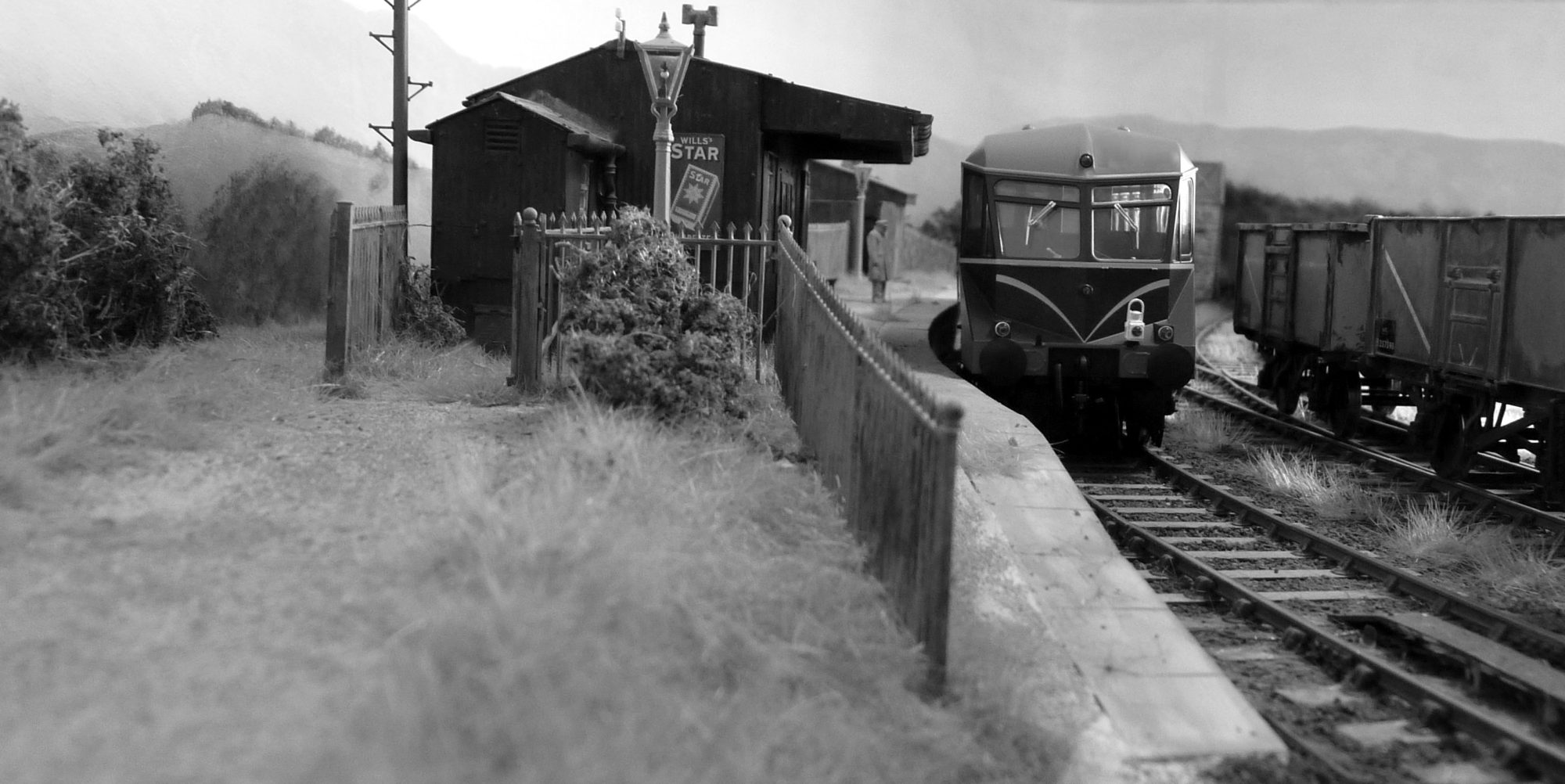My reasons for adopting ‘EM’ standards boiled down to my frustrations with the ready to run mechanisms of yore. I got sick and tired of their poor running qualities and watching them lurch through the so called universal points. Unlike my friends I never used Peco Streamline much, instead I opted for GEM Flexi, or Graham Farish Formoway track, depending on what I could get my hands on. Both had a more accurate sleeper size, and spacing than Streamline. Farish also produced ‘Liveway’ points, which as the name suggests had live crossings. Whilst that feature did prevent my locos from stalling, they still had a tendency to lurch through the crossings. Then along came SMP with their new bullhead flexi track, and a plastic kit for left and right hand points, but being to 24″ radius they didn’t appeal to me. So with the help of various articles on the subject in the model press, I taught myself how to construct my own points from PCB sleeper strip.
Following the advice of Iain Rice in one of his many articles I adopted ‘EM’ standards for my crossing flangeways, and check rail clearances. Now that was fine for my Airfix 14XX, Mainline 57XX Pannier and ‘2251’ Collett goods engines. Gibson wheels also sailed through without any problems, but my old Lima 55XX with its ‘pizza cutter’ wheel flanges just couldn’t cope with the finer clearances and SMP rail chairs. But at least I still had three Western locos that now ran really well, and I felt that I was getting somewhere. That was until a workmate and good friend, who just happened to be a member of the Manchester Model Railway Society said, ” Seeing as you are building your own points, and fitting finer wheels to your stock, why not switch to EM” ?

The inaccurate track gauge of ’00’ has never bothered me, but my friends suggestion really threw a spanner in the works, and gave me plenty of food for thought, however changing to EM would mean building my own loco chassis. The only other alternative was to modify my ready to run models by fitting replacement wheels. Unfortunately the early Mainline chassis with their split frames and axles were not exactly easy to convert. However luck was on my side thanks to Iain Rice, and his simple approach to converting the old Airfix 14XX to EM/P4. All you had to do was to drop the original wheels out and replace them with Gibson’s, which will drop straight into the old Airfix and Dapol chassis, the original coupling rods can even be reused. I haven’t seen the Hornby version of this model, but it wouldn’t surprise me if the same method can be used. So I carried out the conversion, fitting some simple wiper pick ups in the process and ended up with an EM loco that not only ran, but ran very well indeed. But I didn’t stop there for I needed to experiment with etched chassis construction. Once again Iain Rice came to my rescue with his book on the subject. I read it again and again until I had a thorough understanding of the subject. Then I bought the necessary tools for the job, and an etched tender chassis kit for my ‘2251’ goods engine from Comet Models. Not content with the simple option I built the chassis with single beam compensation.

Happy that etched chassis construction presented no problems I joined the EMGS, bought all the necessary gauges, and the rest as they say is history. So now you know why and how I ended up modelling in EM. Would I bother modelling to the finer standards today, well the answer has to be no, and I’m not alone. One friend who works to P4 standards asks why dismantle a perfectly good model, go to the expense of fitting new wheels, then sometimes struggle to get a sweet running chassis? When I asked another friend why he no longer modelled to EM standards, he told me that he would rather spend his modelling time on his favourite subject, rather than build track and convert stock. After years of replacing wheels I have to say that I’m in agreement with both of them. As the old Scalefour slogan read, “Its not just about wheels and track”, and I couldn’t agree more.
Geoff
